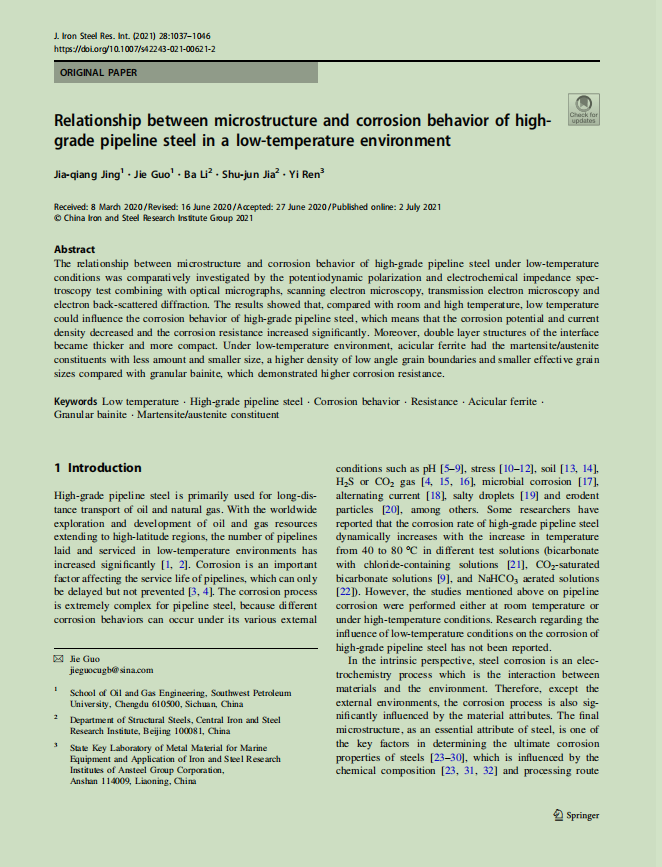The relationship between microstructure and corrosion behavior of high-grade pipeline steel under low-temperature conditions was comparatively investigated by the potentiodynamic polarization and electrochemical impedance spectroscopy test combining with optical micrographs, scanning electron microscopy, transmission electron microscopy and electron back-scattered diffraction. The results showed that, compared with room and high temperature, low temperature could inflfluence the corrosion behavior of high-grade pipeline steel, which means that the corrosion potential and current density decreased and the corrosion resistance increased signifificantly. Moreover, double layer structures of the interface became thicker and more compact. Under low-temperature environment, acicular ferrite had the martensite/austenite constituents with less amount and smaller size, a higher density of low angle grain boundaries and smaller effective grain sizes compared with granular bainite, which demonstrated higher corrosion resistance.
